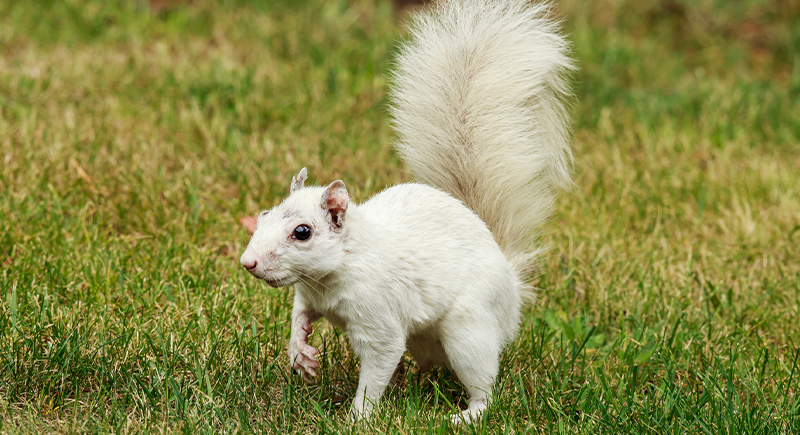The Real Reason White Squirrels Exist and Why They’re So Rare
White squirrels are striking to see, and their rarity often leads people to assume they belong to a completely different species. In reality, they are simply unusual color forms of familiar squirrels, most often the eastern gray. Their pale coats have made them a source of wonder and confusion wherever they appear.
In certain towns, these animals have become more than a curiosity. Communities like Brevard, North Carolina, and Olney, Illinois, have built a kind of local identity around their white squirrels. And yet, behind the fascination lies a larger story—the reasons they exist, and the reasons they remain rare, connect biology, chance, and culture in unexpected ways.
Genetics and Pigment Variations

Image via iStockphoto/Bebedi
You may not be aware, but the color of a squirrel’s coat is determined by melanin pigments. Eumelanin produces dark tones, while phaeomelanin creates reddish hues. White squirrels appear when these pigments fail to develop or distribute normally. Albinism causes a complete lack of melanin, and leaves fur pure white and eyes pink or blue.
Leucism, more commonly seen, results in partial pigment loss, so animals keep dark eyes but grow white coats. These mutations are recessive, which means both parents must have the gene to produce a white offspring. Because that combination is uncommon, sightings remain unusual.
Brevard’s Local Population
In the mountains of western North Carolina, the town of Brevard has become famous for its white squirrels. Their story began in 1949, when a carnival truck overturned in Florida, and two pale squirrels eventually found their way to a local family in the area.
After an escape, the pair established themselves in the wild and produced offspring that spread across Transylvania County. These squirrels are not albinos but leucistic, which means they are usually marked by a white body with darker patches on the head and a stripe along the back.
Concern for their lifespan led Brevard to pass an ordinance in 1986 that made trapping or harming them illegal, more as a symbolic safeguard than as a response to poaching. Today, the White Squirrel Research Institute at Brevard College organizes annual counts by dividing the city into mapped sections, and the surveys consistently show that about 40 percent of the town’s squirrels carry the distinctive white coloration.
Olney’s Albino Colony
Meanwhile, Olney, Illinois, has long been recognized for its albino squirrel colony. Unlike Brevard’s leucistic type, Olney’s albinos lack all pigmentation, and you can see the difference in their pink or red eyes. This absence of melanin often causes vision problems and higher sensitivity to sunlight, which makes survival in the wild more difficult.
Despite these hurdles, Olney supports around 100 to 200 albino squirrels. Protection laws have been in place since the early 1900s to ensure they thrive for generations.
Survival Advantages and Risks

Image via Getty Images/ Dave Collins
Although the pale coats can look striking to people, they create real problems in the wild. Hawks, owls, and cats can detect white squirrels more easily than their gray relatives, which means they are vulnerable to predation.
On the other hand, Albinos face added challenges because their eyesight is often poor. Urban areas, however, tell a different story. On paved roads, gray squirrels blend into the asphalt, which increases the risk of collisions with cars. White squirrels are easier for drivers to notice, and that visibility reduces roadkill rates.
The combination of community protection and these small urban advantages helps explain why certain colonies persist despite their natural disadvantages.